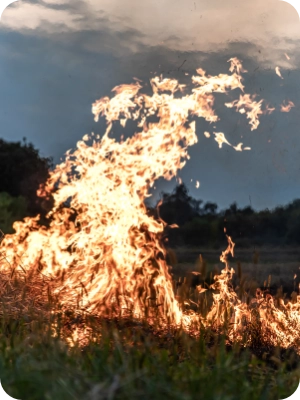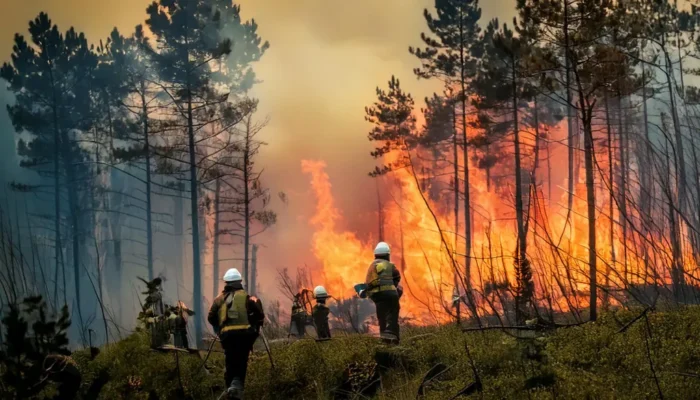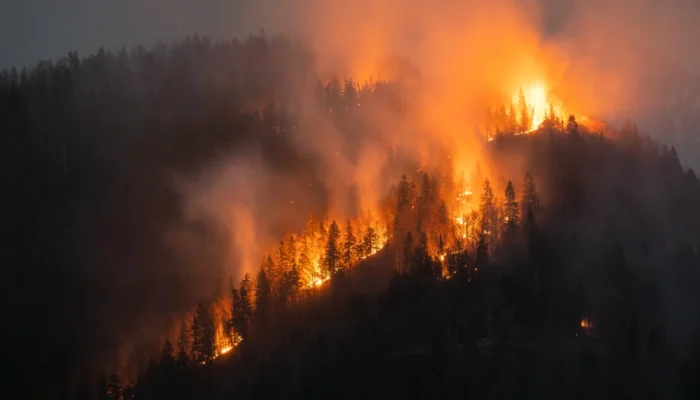When most people think about fire in a forest, they immediately picture destruction, smoke-filled skies, and the loss of beautiful landscapes, but the truth is more complex because fire is not always an enemy of the forest and in fact, it can be one of its greatest allies. Prescribed burns, which are also called controlled burns, are fires that experts set on purpose under carefully planned conditions, and these fires are one of the most effective tools we have for keeping forests alive, thriving, and balanced over time. This practice has been used for thousands of years, and while modern society sometimes struggles to accept the idea of starting a fire on purpose, scientists and foresters agree that these burns are critical for maintaining forest health, preventing catastrophic wildfires, and ensuring that ecosystems remain resilient for future generations.
Table of Contents
ToggleThe History and Purpose of Prescribed Burns
Fire has always been part of the natural story of forests, and long before professional foresters or scientists began studying ecosystems, Indigenous communities across the world understood that fire was necessary for renewal and balance. Native peoples in North America, for example, regularly set small fires to clear out underbrush, open hunting grounds, encourage the growth of edible plants, and protect villages from larger, uncontrolled wildfires. These cultural burning practices were deeply connected to knowledge passed down over centuries, and they revealed that humans could work with fire rather than against it.
When European settlers arrived, they often suppressed these traditions, believing that all fire was dangerous and destructive, but as time went on, foresters began to notice the negative consequences of constantly putting out every fire. Forests grew unnaturally dense, underbrush piled up like dry kindling, and when wildfires eventually did start, they were hotter, larger, and far more destructive than the smaller, natural fires that had once passed through the land. By the early 20th century, wildfire suppression had become official U.S. policy, but by the mid-20th century, researchers and land managers realized this approach was unsustainable.
Today, prescribed burns are recognized as a critical part of land management because they allow humans to reintroduce fire under safe conditions, reducing fuel loads, encouraging natural regeneration, and restoring the balance that fire-adapted ecosystems require. Instead of waiting for lightning strikes or human accidents to spark dangerous wildfires, prescribed burns are planned, controlled, and supervised so that forests can receive the benefits of fire without the devastation of uncontrolled flames.
.
How Prescribed Burns Improve Forest Health

Forests are living systems that constantly grow, shed, and recycle materials, and one of the greatest threats to their long-term survival is the buildup of dead leaves, fallen branches, and dense undergrowth that pile up on the forest floor. If this material is never cleared, it creates dangerous fuel that can feed massive wildfires, the kind that burn so hot and fast that they destroy not only trees but also soil structure, wildlife habitat, and human communities. Prescribed burns, however, carefully reduce these fuels in a safe and controlled way, meaning that future wildfires are less likely to spin out of control.
Another important benefit of prescribed burns is the recycling of nutrients. When leaves and wood are burned at low intensity, the fire releases essential nutrients such as nitrogen and phosphorus back into the soil, where they can be used by plants to grow stronger and healthier. This process is nature’s way of fertilizing the forest, and it helps ensure that new growth is vibrant and sustainable.
Many plants and trees are also adapted to fire, which means they depend on it for reproduction. Certain pine species, for example, have cones that only open and release seeds when exposed to heat, and without periodic fires, these trees would struggle to reproduce. Fire also clears space for sunlight to reach the forest floor, which allows grasses, flowers, and young trees to thrive in areas that would otherwise be shaded out by thick canopies and dense underbrush.
Wildlife benefits as well because prescribed burns create a mosaic of habitats. Some animals prefer dense cover, while others need open areas to forage or hunt, and fire ensures that forests do not become uniform and uninhabitable. By maintaining this variety, prescribed burns support biodiversity and help ecosystems remain resilient to pests, diseases, and climate change. In this way, prescribed burning is not only about preventing disasters but also about actively improving forest health in ways that mimic natural processes.
.
Environmental and Community Benefits
When wildfires are left unchecked, they often burn with such intensity that they release massive amounts of carbon into the atmosphere, contributing to climate change and leaving behind scorched earth that takes decades to recover. Prescribed burns, however, are much cooler and less destructive, and because they are carefully planned, they reduce fuel loads in a way that prevents the outbreak of catastrophic fires. This means fewer greenhouse gases overall and a healthier balance between forests and the atmosphere.
Communities that live near forests also benefit directly. When prescribed burns are used to clear fuels, the risk of uncontrollable wildfires reaching homes, schools, and businesses is reduced. Firefighters and land managers often describe prescribed burns as a form of insurance because they create protective zones around towns and infrastructure. While smoke from a prescribed burn may temporarily affect air quality, it is minor compared to the choking haze produced by massive wildfires, and the controlled nature of the burns ensures that impacts are short-lived.
Economically, prescribed burns save money. Fighting wildfires costs billions of dollars every year, and recovery efforts such as rebuilding homes, repairing roads, and restoring water supplies add even more expenses. By investing in prescribed burns, governments and communities spend far less while protecting lives, property, and ecosystems. Farmers and ranchers also benefit because healthy forests and grasslands provide better grazing, cleaner water, and more sustainable landscapes for agriculture.
The environmental benefits extend even further because prescribed burns encourage biodiversity. Birds that rely on open ground for nesting, deer that graze on fresh shoots after a fire, and insects that thrive in newly exposed soil all depend on periodic burns to create and maintain their habitats. Without fire, ecosystems often become stagnant, dominated by a few species that choke out others, but with fire, the natural balance is restored, leading to healthier forests and more resilient landscapes.
.
Addressing Common Concerns
Despite the proven benefits, many people are understandably nervous about the idea of setting fire to a forest on purpose, and concerns about safety, smoke, and potential accidents are valid. However, prescribed burns are not reckless acts. They are carefully designed operations that require months of planning, strict weather monitoring, and skilled teams of experts who understand how to manage fire in complex environments.
Before any burn begins, land managers evaluate temperature, humidity, wind speed, and fuel moisture to ensure conditions are safe. If the weather does not meet strict criteria, the burn is postponed. Firebreaks are created by removing vegetation in strategic areas to stop flames from spreading beyond the intended zone, and firefighters stand ready with water hoses, equipment, and emergency plans to quickly contain any unexpected flare-ups.
Air quality is another common concern. While prescribed burns do produce smoke, the amount is relatively small compared to uncontrolled wildfires, and because burns are scheduled in favorable weather conditions, smoke usually disperses quickly. In fact, studies such as Prescribed Burning: Differentiating Smoke from Wildfire explain that the smoke from controlled burns is very different from the overwhelming and harmful smoke produced by uncontrolled blazes, and understanding this difference is critical to changing public perception.
Accidents are extremely rare because of the strict oversight involved, and when they do occur, they are generally minor compared to the devastation of uncontrolled wildfires. Agencies like the U.S. Forest Service and state forestry departments have decades of experience conducting burns, and their success stories show that the benefits far outweigh the risks. Across the United States, thousands of prescribed burns are carried out every year, and the overwhelming majority proceed safely and effectively.
Conclusion
Prescribed burns may seem counterintuitive to those who view fire only as a destructive force, but in reality, they are one of the most important tools we have for ensuring the survival and resilience of forests. By reducing fuel loads, recycling nutrients, supporting fire-adapted species, protecting communities, and restoring ecological balance, prescribed burns help forests remain vibrant and sustainable in the face of climate change and human development.
Instead of fearing fire, society must learn to embrace its role as a natural ally when used responsibly and scientifically. Supporting prescribed burn programs means protecting our homes, our wildlife, and our future generations from the devastating consequences of uncontrolled wildfires. Most importantly, it means recognizing that fire is not just a destroyer but also a healer, and that prescribed burns are essential for maintaining forest health in the modern world. For those interested in learning more about the broader role of fire in ecosystems, the article How Can Ecosystems Benefit From Wildfires? provides an excellent explanation of how fire can act as a natural force of renewal across landscapes.




